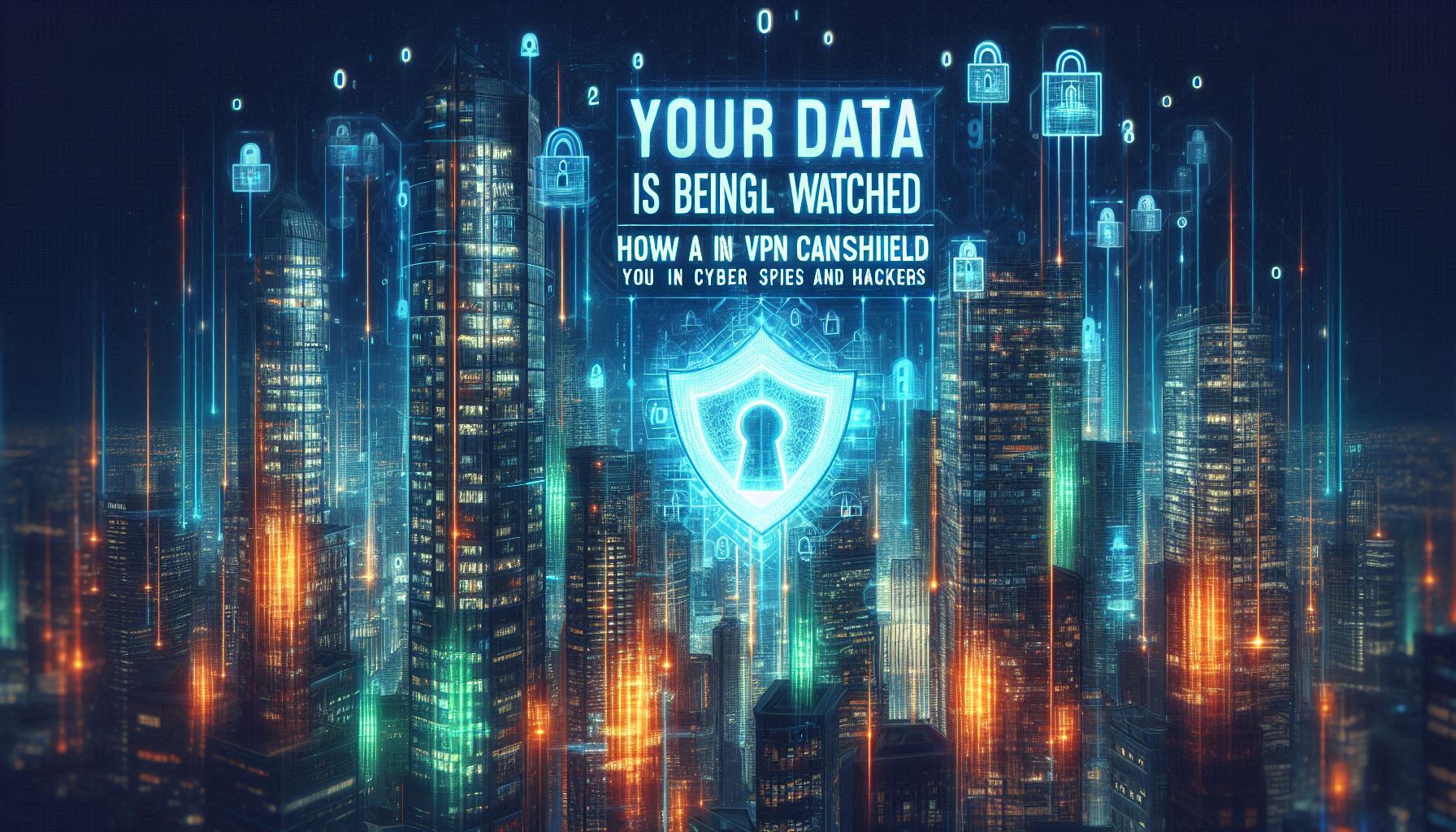$28.7 Billion Lost Every Day: How Cybercrime is Reshaping Corporate America

Every few seconds, another business falls victim to a cyberattack. While you’re reading this sentence, cybercriminals have already stolen millions of dollars from unsuspecting companies. According to Cybersecurity Ventures, cybercrime is projected to cost the world $10.5 trillion annually by 2025, which breaks down to approximately $28.7 billion lost every single day.
Having spent over a decade analyzing cybersecurity trends and protecting businesses through VPN implementations, I’ve witnessed firsthand how these attacks have evolved from simple email scams to sophisticated, multi-million dollar operations that can cripple entire corporations overnight.
The Staggering Reality of Modern Cybercrime Costs
The numbers are nothing short of alarming. Cybercrime is predicted to cost the world $9.5 trillion USD in 2024, making it larger than most national economies. To put this in perspective, if cybercrime were a country, it would rank as the world’s third-largest economy, trailing only the United States and China.
What makes these statistics even more concerning is their trajectory. The global cost of cybercrime is expected to surge from $9.22 trillion in 2024 to $13.82 trillion by 2028. This represents a 50% increase in just four years, highlighting how rapidly the threat landscape is expanding.
How Cybercriminals Target Corporate America
The Rise of Ransomware Attacks
Ransomware has become the weapon of choice for many cybercriminal organizations. Ransomware will cost its victims around $265 billion USD annually by 2031, up from $42 billion in 2024. This sixfold increase demonstrates how quickly this threat is escalating.
From my experience working with companies affected by ransomware, I’ve seen how these attacks typically unfold. Criminals gain initial access through phishing emails or unprotected network endpoints, then quietly move through systems before deploying their payload.
The psychological pressure they create is immense – companies face the choice between paying potentially millions in ransom or losing years of critical data.
Data Breaches: The Hidden Cost Multiplier
While ransomware grabs headlines, data breaches often cause longer-lasting damage. The global average cost of a data breach in 2024 is $4.88 million, an increase of 10% from the previous year. However, this figure only represents the immediate costs.
Through my consultations with affected businesses, I’ve observed that the true cost extends far beyond the initial incident. Companies face:
- Legal fees and regulatory fines
- Customer notification expenses
- Credit monitoring services
- Lost business from damaged reputation
- Long-term customer acquisition costs to replace lost clients
Small Businesses: The Unexpected Targets
Many entrepreneurs believe their companies are too small to attract cybercriminal attention. This assumption proves dangerous. 46% of all cyber breaches impact businesses with fewer than 1,000 employees, and 61% of SMBs were the target of a cyberattack in 2021.
During my work with small and medium enterprises, I’ve noticed they often lack the resources and expertise of larger corporations, making them attractive targets. Cybercriminals view them as low-hanging fruit – easier to compromise but still valuable enough to generate substantial profits.
The Human Element in Cybersecurity Failures
Insider Threats: The Enemy Within
One of the most sobering statistics I’ve encountered is that 83% of businesses reported experiencing at least one insider attack in 2024. These aren’t always malicious employees – many insider threats result from simple mistakes or social engineering tactics.
In my experience implementing security measures for various organizations, I’ve learned that human error remains the weakest link in most cybersecurity strategies. Employees unknowingly download malware, fall for sophisticated phishing attempts, or inadvertently provide access credentials to unauthorized individuals.
The Social Media Attack Vector
The growth of social media in recent years has given cyber criminals another avenue of attack. Platforms like Facebook, LinkedIn, and Twitter have become goldmines for cybercriminals seeking personal information to craft targeted attacks.
Industry-Specific Vulnerabilities
Healthcare Under Siege
The healthcare industry faces unique challenges due to the sensitive nature of patient data and the critical need for system availability. When hospitals get hit by ransomware, they can’t simply shut down operations – lives are literally at stake.
Financial Services: The Ultimate Prize
Banks and financial institutions remain primary targets due to the obvious monetary incentives. These organizations invest heavily in cybersecurity, but they also face the most sophisticated attacks from well-funded criminal organizations and state-sponsored hackers.
Manufacturing: The New Frontier
Industrial systems that were once isolated from the internet now connect to networks for efficiency and remote monitoring. This connectivity creates new vulnerabilities that cybercriminals actively exploit to disrupt production and steal intellectual property.
The Technology Arms Race
AI-Powered Attacks vs. AI-Powered Defense
Cybercriminals increasingly leverage artificial intelligence to automate attacks, create more convincing phishing emails, and identify vulnerabilities faster than ever before. However, organizations that extensively use security A.I. and automation to prevent data breaches realize an annual average cost savings of $2.22 million.
This statistic reinforces what I’ve observed in my consulting work: companies that invest in advanced security technologies see measurable returns on their investment through reduced incident costs and faster threat detection.
The VPN Advantage in Corporate Security
Throughout my years of recommending cybersecurity solutions, I’ve consistently seen how proper VPN implementation can significantly reduce a company’s attack surface. VPNs create encrypted tunnels that make it exponentially more difficult for cybercriminals to intercept communications or gain unauthorized network access.
For businesses looking to strengthen their defenses, implementing enterprise-grade VPN solutions represents one of the most cost-effective security investments available. VPN Suggest’s business security guide offers comprehensive insights into selecting the right VPN infrastructure for different organizational needs.
The Economic Ripple Effect
Beyond Direct Costs
The $28.7 billion daily figure only captures direct losses. The economic ripple effect extends much further:
- Supply Chain Disruptions: When major suppliers get hit, entire industries can experience shortages and delays
- Insurance Premium Increases: As claims rise, cyber insurance costs increase for all businesses
- Investment in Security: Companies must divert resources from growth initiatives to defensive measures
- Regulatory Compliance: New regulations require additional spending on compliance and reporting
Stock Market Impact
Publicly traded companies often see immediate stock price drops following major cyber incidents. The long-term impact on shareholder value can be substantial, particularly for companies in trust-dependent industries like healthcare and financial services.
Building Resilience: Lessons from the Trenches
The Multi-Layered Defense Strategy
Through my experience helping organizations recover from cyberattacks, I’ve learned that successful defense requires multiple overlapping security layers:
Perimeter Security: Firewalls, intrusion detection systems, and secure network architecture form the first line of defense.
Endpoint Protection: Every device connecting to company networks needs comprehensive security software and regular updates.
User Education: Regular training programs help employees recognize and avoid social engineering attempts.
Incident Response Planning: Having detailed response procedures can dramatically reduce the cost and impact of successful attacks.
The Zero Trust Revolution
30 percent of organizations will adopt Zero-Trust network access (ZTNA) models by 2024. This approach assumes that no user or device should be trusted by default, regardless of their location or previous authentication status.
Looking Ahead: The Future of Cybercrime
Emerging Threats
Based on current trends and my observations of the evolving threat landscape, several concerning developments are on the horizon:
Quantum Computing Threats: As quantum computers become more powerful, they’ll eventually be able to break current encryption methods, requiring entirely new security approaches.
IoT Vulnerabilities: The explosion of Internet of Things devices creates millions of new potential entry points for cybercriminals.
Deepfake Technology: Advanced AI-generated content will make social engineering attacks more convincing and harder to detect.
The Cybersecurity Skills Gap
One of the biggest challenges facing corporate America is the shortage of qualified cybersecurity professionals. This gap leaves many organizations understaffed and vulnerable, creating opportunities for cybercriminals to exploit.
Conclusion
The $28.7 billion daily cost of cybercrime represents more than just numbers on a spreadsheet – it reflects a fundamental shift in how businesses must operate in the digital age. Every company, regardless of size or industry, has become a potential target in this ongoing cyber war.
The organizations that will thrive are those that view cybersecurity not as a cost center, but as a critical business function that protects their most valuable assets.
As cybercrime continues to evolve and expand, the companies that invest early and comprehensively in robust security measures will be best positioned to weather the storm and maintain their competitive advantage.
Frequently Asked Questions
How much does cybercrime cost businesses daily?
Cybercrime costs the global economy approximately $28.7 billion per day based on 2025 projections.
What percentage of small businesses experience cyberattacks?
61% of small and medium businesses were targeted by cyberattacks in 2021, with 46% of all breaches affecting companies with fewer than 1,000 employees.
What is the average cost of a data breach in 2024?
The global average cost of a data breach reached $4.88 million in 2024, representing a 10% increase from the previous year.
How often do ransomware attacks occur?
Ransomware attacks happen approximately every two seconds, with costs expected to reach $265 billion annually by 2031.
What percentage of businesses use insider threat protection?
83% of businesses reported experiencing at least one insider attack in 2024, highlighting the critical need for comprehensive employee monitoring and training.
Loading newsletter form...






